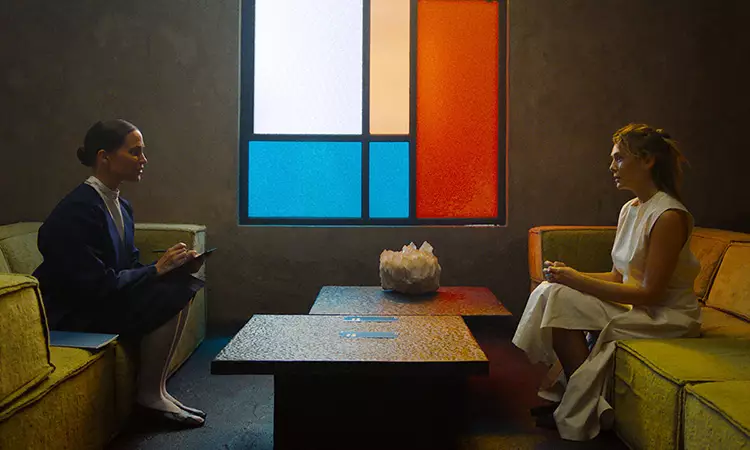In a world where societal norms are dictated by oppressive governance and environmental desolation, Fleur Fortune’s directorial debut, “The Assessment,” pulls the audience into a chilling narrative that interrogates the essence of parenthood. Not merely an exploration of familial bonds, this film boldly presents a fragmented vision of human connection within an authoritarian regime, revealing the stark realities of longing, love, and the commodification of personal choices.
Set against the backdrop of a post-apocalyptic landscape ravaged by climate change, “The Assessment” takes an unsettling look at how environmental crises can morph into a breeding ground for tyranny. The characters Mia (Elizabeth Olsen) and Aaryan (Himesh Patel) live restricted lives in a sterile, high-tech home—a deceptive cocoon amid a crumbling world. While they are portrayed as well-intentioned scientists striving for self-sufficiency, their reality is fraught with the tension of being under constant surveillance. The film paints a grim picture of a society where governmental surveillance extends even into the intimate domain of parenthood.
The depiction of a faceless bureaucracy evaluating individuals for their parenting capabilities reveals a disturbing truth about modern society—how often personal freedoms are sacrificed at the altar of collective security. The irony is palpable: the couple’s quest for parenthood requires them to relinquish their autonomy and submit to the scrutiny of a government official. It raises profound questions about the essence of freedom and the sacrifices one is willing to make to become a parent in an unforgiving world.
The central conflict emerges when Virginia (Alicia Vikander), the government-appointed evaluator, moves in to observe Mia and Aaryan for a week. Her presence amplifies the already tense atmosphere, serving as a reminder of the oppressive laws governing their lives. What Fortune captures brilliantly is the emotional toll this invasive process takes on the couple. Virginia’s methodical examination transcends mere observation; it is an intrusion—one that challenges the very foundation of their relationship.
Virginia’s character embodies the embodiment of the system, oscillating between authoritative figure and an almost childlike persona. This duality makes the audience ponder: is she truly human, or merely a product of a machine that embodies the government’s cold efficiency? Her role in the narrative deepens the film’s exploration of what it means to truly care for another—can love exist under such hyper-scrutinized conditions?
Visually, “The Assessment” contrasts a sleek, sanitized interior with the harsh realities outside. The meticulous design of Mia and Aaryan’s sanctuary starkly contrasts with the chaotic environment beyond their walls. This not only sets a tone of discomfort but also visually represents the couple’s internal conflict. The greenhouse they tend symbolizes their dreams and desires; its vulnerability in the face of deteriorating conditions highlights the fragility of hope when pitted against harsh realities.
Despite these compelling themes, the film skims the surface of its characters’ psychological complexities. While performances by Olsen and Vikander are commendable—Olsen’s evolution from frustration to rebellion and Vikander’s fluctuating demeanor enhance the narrative—the film occasionally falls short of diving deeply into the emotional struggle of its protagonists. The potential for a more profound exploration of their psyches is left well below the surface, diluting what could have been a hauntingly beautiful meditation on love, loss, and the yearning for family within societal constraints.
“The Assessment” serves as a thought-provoking piece, layered with social commentary on the nature of control, parenthood, and personal freedoms. It poses essential questions about autonomy in the face of systemic oppression, evoking sentiments that resonate with contemporary global issues. However, while its visual storytelling and impactful performances leave a mark, the film ultimately fails to dig deep enough into its characters’ emotional fabric. Though it offers much to ponder, it subtly hints at the sacrifices made in the name of love and family, falling just short of achieving the emotional resonance its premise promises. As audiences, we are left contemplating not only the cost of parenthood but also the price of freedom in an increasingly monitored world.

